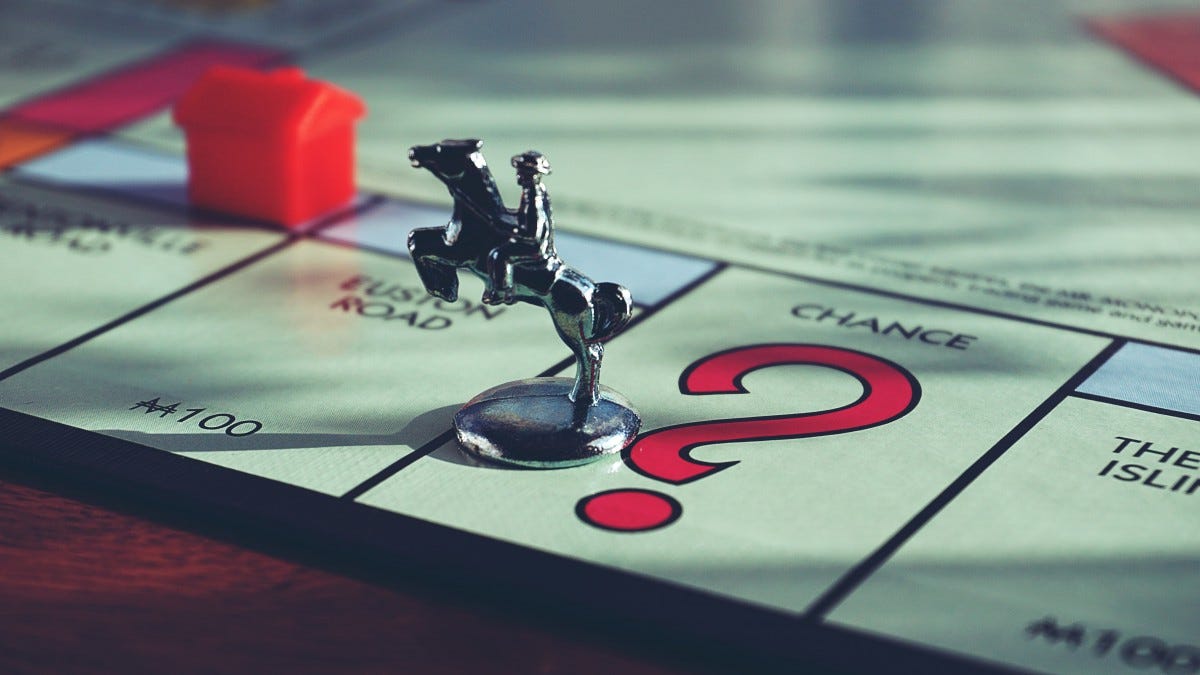Board games and _probabilistic analysis — _has there been a more iconic duo? I thought my idea was so novel, to combine these two interests into a little study, but a simple web search of “Markov Monopoly” shows the wide extent to which the topic has already been covered. Nevertheless, there are various different approaches out there that all produce different results, and that’s part of the beauty. This one leans more theoretical than practical, but perhaps someday I will seek out a deeper scope somewhere further down the rabbit hole.
Monopoly has been one of the world’s most widely played board games for the greater part of the last century, and to be a successful player requires deliberated strategy in negotiation and resource management. While such human-controlled skills are crucial, there is a heavy reliance on chance as gameplay is governed by rolling dice and often drawing cards. Monopoly is infamous for stirring up cutthroat in-game competitiveness, so knowledge about the likeliest landing areas on the board equips the player to make a more informed decision on how to achieve the coveted end-goal of driving their friends and family to bankruptcy.
Finance is the governing indicator of player progress in Monopoly, where every decision made by a player should ultimately improve their relative net worth. Having said that, analyzing the financial aspects of the game is beyond the scope of this investigation, which focuses solely on the player’s movement around the board. The objective here is to determine the probabilities of landing on any of the 40 spaces on the board when the number of rolls approaches infinity. These are known as the steady-state probabilities, which will be computed by employing the law of total probability and performing a Markov chain.
#data-science #probability #markov-chains #monopoly #board-games
